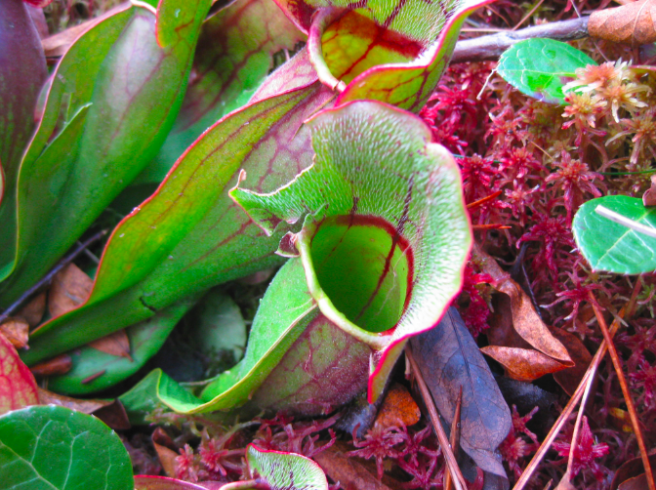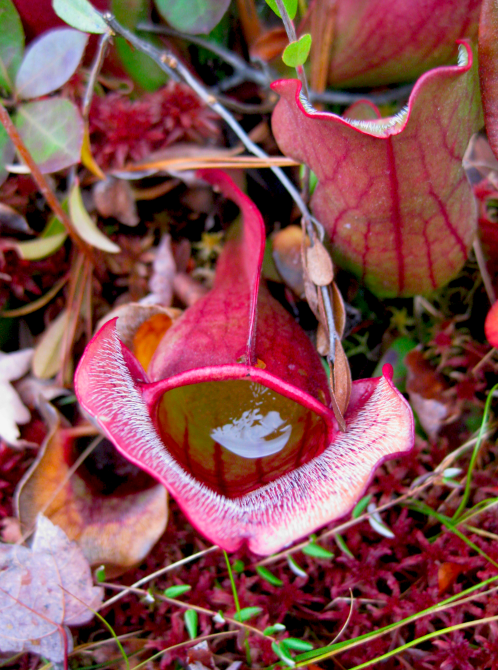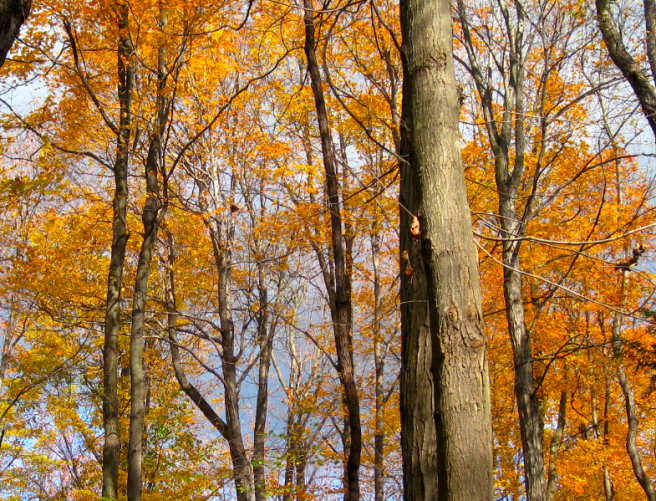Zurich Bog — Nature on Acid
Upstate New York shows off its incredible natural diversity via Zurich Bog. The bog is protected as part of the Bergen Swamp Preservation Society. It is located between Newark and Sodus New York, just east of Brantling Ski Slope. In fall the surface of the bog turns brilliantly red as the normally green peat that acts as a carpet over the surface of the bog dramatically changes color and provides a startling contrast to the surrounding beech-filled woods. Acid bogs are formed when a type of moss called sphagnum (or peat moss) grows over the surface of a pond. Sphagnum actually changes its environment to be less hospitable to other species. A well-established colony of sphagnum moss can lower the pH of its host lake to around 3.5.

Carnivorous Pitcher Plants thrive in an acid bog
This, of course, makes the bog inhospitable to more neutral pH plants, and whole new species have evolved just to fit into the ecosystem that sphagnum creates. One particularly cool adaptation is carnivorous. Brilliantly colorful and exotic looking Pitcher Plants capture insects in order to obtain the nutrients that are missing in their acidic diet.

Safe passage through the bog
Generally, the sphagnum grows inward from the edges of the pond, swelling as it takes in up to twenty times its dry weight in water and forming a raised mat. At some point, this mat stops being directly connected to the bottom, and if you’re walking out onto the bog, you’re literally being held up only by floating sphagnum.
Out on the bog it feels like you are walking on a water-bed. The signs at the entrance do not recommend you walk through the bog, off the planked trail, in order to protect the delicate bog and to keep you safe and dry.
Safe passage through the bog

Cold enough for ice cubes in the pitcher

The diversities of an acid bog and the surrounding hilly woods create a spring carpet of wildflowers. Zurich Bog encourages wildflowers that are predominantly found in the Adirondacks. The Beech/Maple drumlins have a soil that encourages diverse woodland wildflowers April – June.

Beech trees surround the bog providing a stark color contrast
I have listed the names of some of the flowers and plants that grow in the bog and surrounding woods because they have such great names:
Spring Beauty, Lady Slipper, Cut-leaved Toothwort, Bloodroot, Christmas fern, Trillium, Trout Lilies, May Apples, Jack in the Pulpit, Dutchman’s Breeches, Squirrel Corn, Marsh Marigolds, Hepatica, Cinnamon Fern, Royal Fern, Sensitive Fern.



